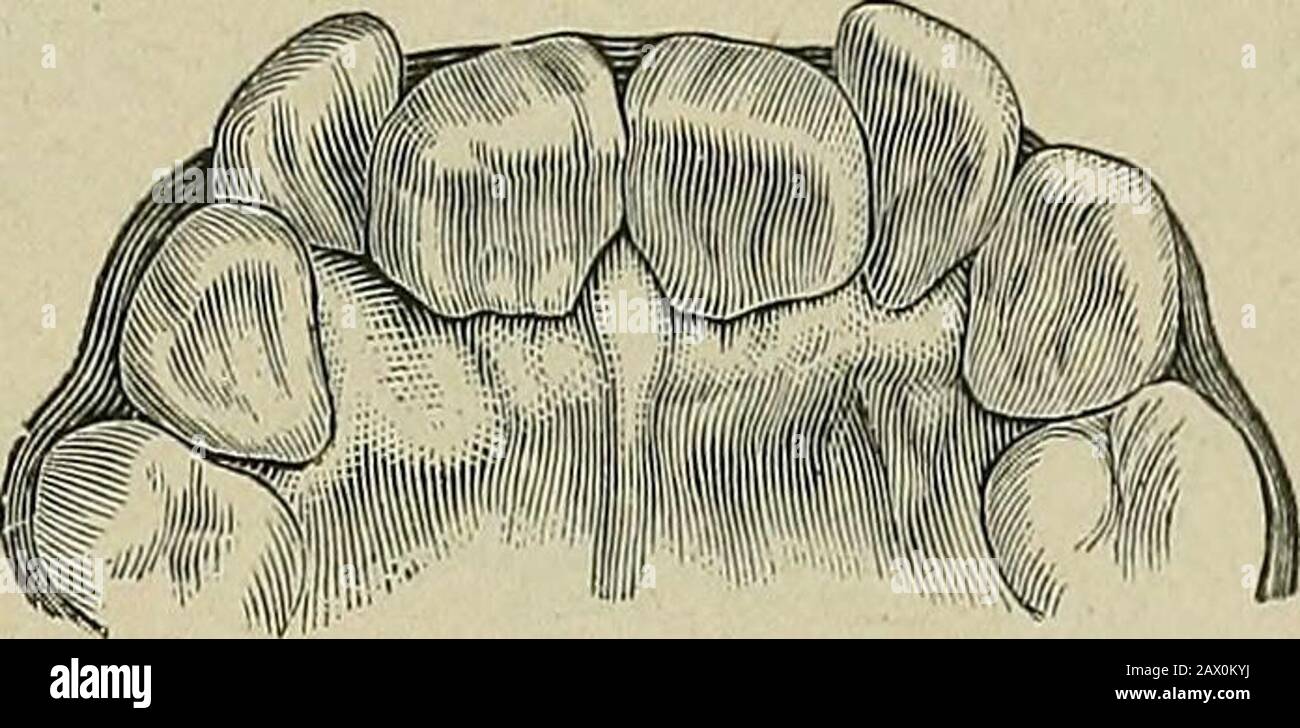The etiology of osseous deformities of the head, face, jaws and teeth . oot, the greater the degree of rotation mustbe before the lateral finds a resting-place. If the diameterwere equal to the space left, and there were no impinging onthe root, there would be no displacements. But when thespace is not sufficient for the lateral and a pressure is broughtto bear on one side of either cutting-edge or root, there mustbe a partial rotation, which is proportioned to the diameter ofthe cutting-edge. The wedge-shaped character of the crownassists in rotation, as the rounded angle of the anterior cusp

Image details
Contributor:
The Reading Room / Alamy Stock PhotoImage ID:
2AX0KYJFile size:
7.1 MB (355 KB Compressed download)Releases:
Model - no | Property - noDo I need a release?Dimensions:
2255 x 1108 px | 38.2 x 18.8 cm | 15 x 7.4 inches | 150dpiMore information:
This image is a public domain image, which means either that copyright has expired in the image or the copyright holder has waived their copyright. Alamy charges you a fee for access to the high resolution copy of the image.
This image could have imperfections as it’s either historical or reportage.
The etiology of osseous deformities of the head, face, jaws and teeth . oot, the greater the degree of rotation mustbe before the lateral finds a resting-place. If the diameterwere equal to the space left, and there were no impinging onthe root, there would be no displacements. But when thespace is not sufficient for the lateral and a pressure is broughtto bear on one side of either cutting-edge or root, there mustbe a partial rotation, which is proportioned to the diameter ofthe cutting-edge. The wedge-shaped character of the crownassists in rotation, as the rounded angle of the anterior cusp THE HEAD, FACE, JAWS AND TEETH 439 offers less resistance than a line or surface. This gives riseto the commonest form of irregularity (Nos. 1 and 2; Figs. 188and 184), in which the mesial surface of the lateral overlapsthe distal surface of the central, while the distal surface ofthe lateral is either in a line with the cuspid or just backof it. 3. In those cases where the lateral is in a line with thecuspid (Fig. 185), but its mesial surface is behind the central.. Fijr. 183.